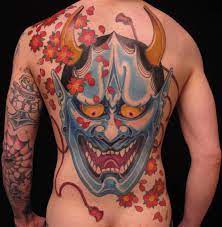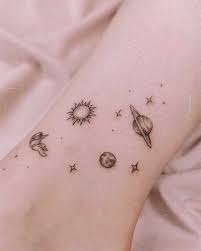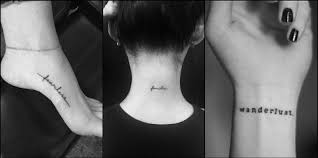Japanese traditional tattoos carry a rich and complex history. They served as both status indicators and spiritual symbols. The Phoenix is one of the beloved symbols in Japanese tattoo art. It stands for rebirth, victory, and luck.

Foo Dog
The Foo Dog tattoo is a cherished traditional Asian symbol. Both men and women admire this symbol. It symbolizes strength and courage. It portrays your readiness to stand up for yourself and assert your rights.
Foo Dogs have other names. They’re known as Shishi o jishi in Japanese or Komainu in Taiwanese culture. These mythical creatures resemble lions. They carry many symbolic meanings and associations. Chinese royalty initially adopted them to express imperial power and spiritual strength.
These guardian lions also served as protectors. They defended Buddhist temples and government buildings all over Asia. They symbolized reincarnation and protection from evil spirits.
Foo Dog statues typically come in a pair. The male Foo Dog’s paw rests on a wish-fulfilling jewel. The female one’s paw rests on an animal cub.
Lion
Lions are long-standing symbols in Asian cultures. They stand for strength, courage, and royalty. They are often represented as statues. These statues protect important places from harm and ward off evil spirits.
tattoos featuring Koi fish are also common. They symbolize wealth, success, and good fortune in Japanese culture.
Members of the ancient Dai tribe had a unique tattooing practice. They tattooed all their girls at around 12 or 13 years old. This ritual was an initiation into adulthood. It was believed to deter potential rapists within their community.
Traditional Asian tattoos have been appreciated for a long time. Today, they are famous worldwide. The designs often draw inspiration from spirituality, mythology, religion, and nature.
Hyottoko
Hyottoko has been a favorite figure in Japanese folklore for a long time. He often appears alongside Okame in traditional Japanese dance performances.
This male character is unique. His distinct facial features and humorously placed mouth set him apart. He is often portrayed blowing fire from a bamboo pipe. He is a popular feature on festival masks.
Hyottoko is easily recognized. He wears a signature blue and white bandana. Add some joy and laughter to your life with Hyottoko tattoos! They will surely bring happiness.
Hyottoko’s joyful energy makes him a symbol of good luck. He pairs well with his female counterpart Okame. Hyottoko can bring happiness, regardless of your life situation.
Symmetry
Symmetry implies that two sides of something are equal. For example, if you cut a heart from paper, both halves are identical.
Mathematics defines symmetry differently. It is a property that keeps an object unchanged even after various transformations. These transformations can include translation, reflection, and rotation. There are many different types of symmetry.
Teaching symmetry in classrooms can be fun. Games and mirrors can help. Also, encouraging children to explore balance in nature can be helpful.
A good teaching technique for primary school children is to give them a list of shapes. Ask them to identify a line of symmetry. This line divides an object into two congruent halves. Typically, these lines are vertical or horizontal.

